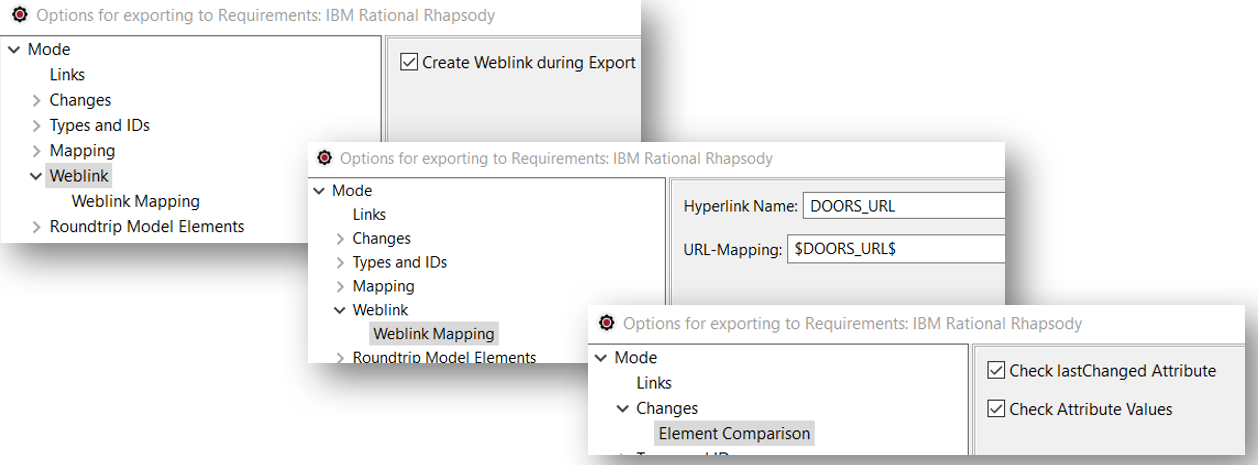- How do I export DOORS Requirements?
To export Requirements from DOORS, you have to create a ReqIF Definition and then export it.
For more information on how to create a ReqIF Definition, consult Exporting Requirements from DOORS.
- How to filter Attributes to synchronize from DOORS to Rhapsody?
You can only filter the content of the ReqIF file when exporting from DOORS by using views:
- Create a view in DOORS, which contains only the attribute columns you want to have.
- Configure your ReqIF Definition in DOORS for the corresponding module that it contains only the desired view:

The exported ReqIF will then only contain the attributes of the view.
- What is the difference between “Include data in View” and “View to Include” options when exporting from DOORS?
The Include data in view option exports the data (Attributes) defined in the view.
The Views to Include option exports the selected views in the ReqIF File. All Attributes are exported in that case.
To filter the content of the ReqIF file, the option Include data in view must be used.
- Can I export a Baseline from DOORS, running ReqIF export?
Yes, you can either export the current version of the Formal Module, either a Baseline of it.
For more information on DOORS ReqIF definition creation, consult Creating ReqIF definitions.
- What is the difference between ReqXChanger > Update Requirements and ReqXChanger > Open ReqXChanger > Read Requirements?
The menu ReqXChanger > Update Requirements will synchronize Requirements from DOORS in Rhapsody:
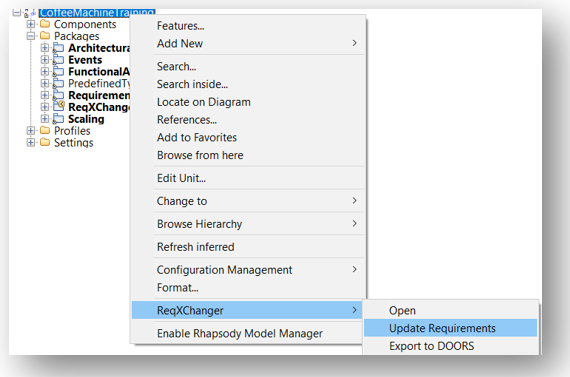
The menu ReqXChanger > Open ReqXChanger > Read Requirements will read the ReqIF File.
If you open the Model Browser tag (in ReqXChanger), you will be able to have a simple view of the Elements in the ReqIF File (Specifications, SpecObject).
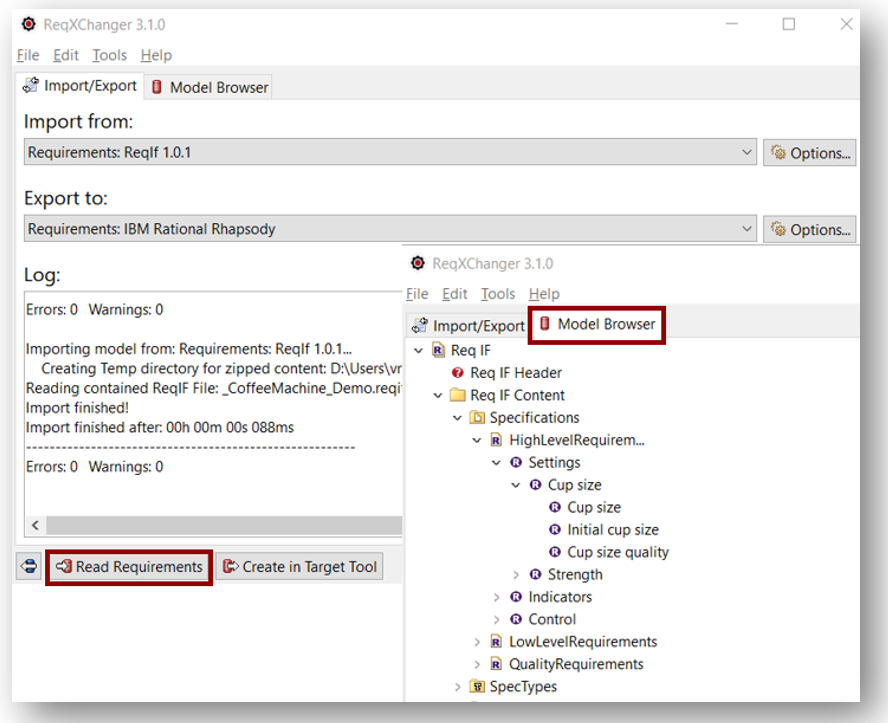
Some tools, like ReqIF Studio, view the elements of the ReqIF file:
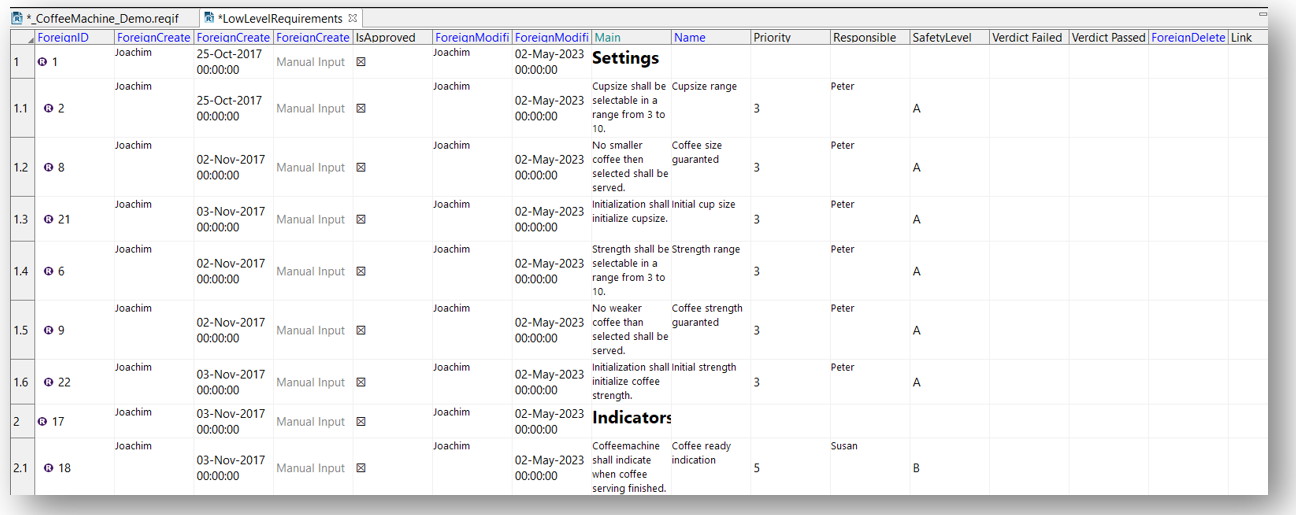
- How can I navigate from Rhapsody to DOORS?
The navigation from Rhapsody to DOORS is done through the creation of Hyperlinks in Rhapsody.
For more information on how to create the Hyperlinks in Rhapsody, consult Navigation from Rhapsody to DOORS.
- Why my Hyperlinks from Rhapsody to DOORS are not created?
Rhapsody weblinks to DOORS elements are not created by default.
For more information on how to create them, consult Navigation from Rhapsody to DOORS.
- I have a strange “(U) DOORS xx “ Hyperlink created in Rhapsody
I have selected the ReqXChanger option Create Weblink during Export however I have a strange “Unloaded” Hyperlink.
When I click on the hyperlink, Rhapsody indicates that “Hyperlink target model element does not exist”:

This happens because the DOORS attribute used for navigation does not exist in DOORS.
For more information on how to navigate from Rhapsody to DOORS, consult Navigation from Rhapsody to DOORS.
Note: A dxl script would create this attribute DOORS_URL automatically. We will ensure to provide such a script in a future release of ReqXChanger.
- How can I see Traceability and Requirements coverage?
The visualization of Traceability and Requirements coverage is ensured by Tables in Rhapsody. To date there are three types of tables:
- The Requirements Details Table that displays details on Requirements, such as their ID, name, Specification, Responsible, Priority, Status and traced by architecture link.
- The Requirement Hierarchy Table that displays Requirements in their hierarchy, and other information regarding requirements, such as their name, Specification, Responsible, Priority, Traced by architecture link and coverage percentage.
- The Links Table that displays the Requirements having a relation to or from an Architecture Element.
For more information on how to see the Traceability and Requirements coverage, consult Requirement Management Tables.
- What is the recommended way to work when having multiple Rhapsody projects configured with ReqXChanger?
I am working in parallel on two different Rhapsody projects. Both projects uses ReqXChanger for traceability purpose and different DOORS ReqIF Files…
In that case, you will have to load and use different ReqXChanger configurations (each corresponding to the Rhapsody project and the DOORS ReqIF File):
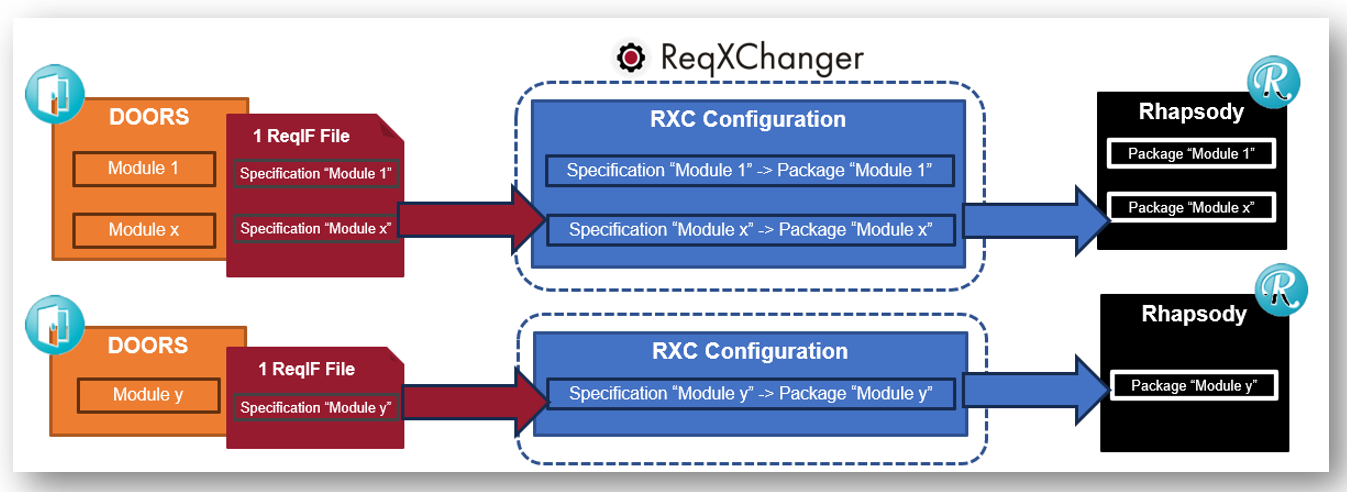
- What means "Exporting Links between Requirements..." step from ReqXChanger log when running Update Requirements?
It creates Dependencies between Requirements, but for this, you have to export the corresponding Link Module from DOORS.
Also, the option Mode > Links > Export Links between Requirements must be selected (which is the case by default).







